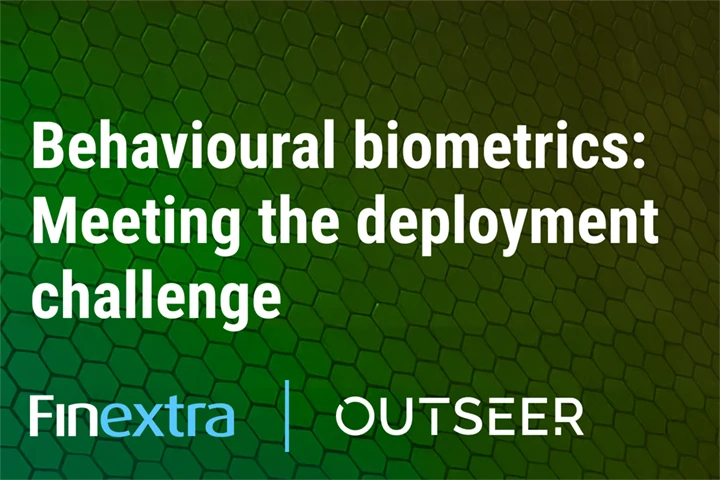Fraud Prevention is the New Brand Experience: The Secret to Secure, Friction-Free Digital Commerce
As we steamroll toward the all-important fourth quarter, it’s a good time to rethink fraud prevention in online commerce. More than $200 billion in revenue may be riding on it.
According to Jupiter Research, global digital commerce accounted for $4.2 trillion in revenues in 2020, and is expected to climb another 16.8% this year. Even as they slowly return to real-world stores, consumers continue to buy through card-not-present (CNP) transactions driven through mobile apps, text messaging, and popular online payment options like Buy-Online-Pickup-in-Store (BOPIS) and Buy-Now-Pay-Later (BNPL).
Yet while all of this digital convenience is exciting, it’s also now simply expected. For merchants, the ability to tap customer data to deliver truly seamless, personalized, and differentiating digital brand experiences will grow more crucial by the day. But accomplishing that will take bulletproof fraud prevention measures that don’t frustrate the many to keep out a malicious few.
Fraud + Friction: The Ultimate Brand Busters
From the look of things, that’ll be easier said than done. As shopping and payments become more global, mobile, and on-demand, whole new avenues of attack have emerged for fraudsters to exploit.
Losses from CNP fraud alone, for instance, topped $6.4 billion in 2020—and could increase another 16.4% this year. Meanwhile, fraudsters are also capitalizing on windows of opportunity in payment options like BOPIS, which suffers a 7% fraud attempt rate compared to 4.6% with other delivery models. And the fact that customers receive goods before ever paying means BNPL could prove irresistible to organized fraud.
At the same time, brand impersonators continue to target consumers with phishing attacks, malicious shopping apps, and fraudulent social media pages to steal credit card information and login credentials. And account takeover (ATO) attacks now lead to more than $16 billion in loss in the U.S. alone, up 300% from 2019.
According to HelpNetSecurity, 26% of merchants say these forms of fraud are significantly damaging their profitability. But throttling up fraud controls means irksome step-up challenges and cart abandonment, and unwarranted transaction declines that erode revenue potential and send customers running to competitors. The good news: It doesn’t need to be this way.
Risk-based Authentication to the Rescue
Today, credit card companies, banks, and payment processors serving the retail sector are racing to layer in fraud defenses that don’t drive away customers. But they’re having only limited success. Steps like confirming CNP transactions with customers via text message is a growing trend, for instance. But shopping cart abandonment continues to impact 75% of all purchases, leading to $4 trillion in lost revenue potential each year.
Risk-based authentication (RBA) is proving to be a much better approach. Solutions that build upon the features available in the EMV 3-D Secure protocol and other technologies, for instance, analyze hundreds of risk indicators to silently authenticate customers before a transaction even happens—with zero friction for legitimate users. In real-world deployments, our own 3DS-based solution delivers a friction-free transaction experience while preventing 95% of all fraud loss. Only a scant 5% of transactions deemed high-risk are challenged.
Putting an End to Imposters and ATOs
Combined with other technologies, risk-based authentication can be used to prevent account takeover with the same efficacy. Using Outseer again as an example, we leverage identity science and crowdsourced intelligence from 20 billion annual transactions spanning every industry and geography to measure the risk associated with a user’s login and post-login activities. That includes transactions, changes to account details, and more.
Since users are authenticated transparently, step-up challenges are reserved for those very few instances requiring extra scrutiny—creating a smooth, seamless experience for authentic users while kicking fraudulent transactions to the curb.
Still, these measures may not always be enough on their own. Merchants themselves should source a threat management and takedown service that can protect against phishing attacks, rogue mobile apps, and fraudulent social media pages that target their customers and can do serious reputational damage to their brands. (You can learn more about Outseer’s threat monitoring and remediation services here.)
Safer Sales Are Just the Start of It
As a CMO, I understand what’s at stake in all of this—and it’s bigger than just fourth quarter revenue and profit.
Increased digital transactions have bathed merchants in consumer data. This does more than just help them make the contextually relevant offers that can increase cart value by 40%. As The Drum points out, it also makes retail brands powerful media platforms in their own right—just ask Amazon and its $6.9 billion in first-quarter ad revenue.
With Google signaling the end of third-party cookies and Apple’s moves to block ad targeting, the first-party data merchants collect and the direct consumer channels they control can be monetized as advertising venues that further boost their profits this holiday season and (far) beyond.
But that’s only if they can create the safe, secure digital shopping experience consumers (and brand partners) expect. Risk-based transaction fraud controls and other anti-fraud solutions will be critical to making that happen.
To learn more about protecting ecommerce transactions through the power of frictionless fraud prevention, request a free demo today.












